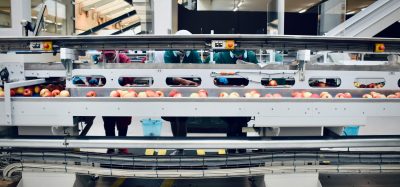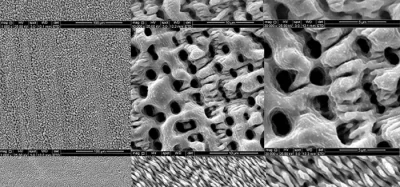EHEDG European Hygienic Engineering and Design Group News from EHEDG
- Like
- Digg
- Del
- Tumblr
- VKontakte
- Buffer
- Love This
- Odnoklassniki
- Meneame
- Blogger
- Amazon
- Yahoo Mail
- Gmail
- AOL
- Newsvine
- HackerNews
- Evernote
- MySpace
- Mail.ru
- Viadeo
- Line
- Comments
- Yummly
- SMS
- Viber
- Telegram
- Subscribe
- Skype
- Facebook Messenger
- Kakao
- LiveJournal
- Yammer
- Edgar
- Fintel
- Mix
- Instapaper
- Copy Link
Posted: 15 December 2010 | Juliane Honisch, EHEDG Secretariat | No comments yet
Founded in 1989, the European Hygienic Engineering & Design Group (EHEDG) is a consortium of equipment manufacturers, food industries and research institutes as well as public health authorities. From then to now, the group has come a long way. The principal goal of EHEDG is the promotion of safe food (also beverages and increasingly pharmaceuticals) by improving hygienic engineering and design in all aspects of food manufacture.
In the past few years, EHEDG has developed greatly, gaining in international scope, expertise and sheer number of members, which has risen considerably.
Founded in 1989, the European Hygienic Engineering & Design Group (EHEDG) is a consortium of equipment manufacturers, food industries and research institutes as well as public health authorities. From then to now, the group has come a long way. The principal goal of EHEDG is the promotion of safe food (also beverages and increasingly pharmaceuticals) by improving hygienic engineering and design in all aspects of food manufacture. In the past few years, EHEDG has developed greatly, gaining in international scope, expertise and sheer number of members, which has risen considerably.
Founded in 1989, the European Hygienic Engineering & Design Group (EHEDG) is a consortium of equipment manufacturers, food industries and research institutes as well as public health authorities. From then to now, the group has come a long way. The principal goal of EHEDG is the promotion of safe food (also beverages and increasingly pharmaceuticals) by improving hygienic engineering and design in all aspects of food manufacture.
In the past few years, EHEDG has developed greatly, gaining in international scope, expertise and sheer number of members, which has risen considerably.
Where can EHEDG help?
EHEDG – The European Hygienic Engineering & Design Group – has combined the think-pool of users, manufacturers, R&D science as well as public health authorities with the common goal to promote hygiene during the processing and packaging of comestible products. In this way, EHEDG has closed the knowledge gap that exists between the user industries, the equipment manufacturers and state-of-the-art R&D.
So far, so good. This common goal is evident, yet not easily reached. For the producers of comestible goods, the focus on clean and aseptic production has to be set as early as the acquisition of exactly the right and thus reliably cleanable equipment. The expertise for this must come from different sources:
» the experience of the food or pharmaceuticals producer who knows about the possible problem areas
» the know-how of the equipment manufacturer who offers exactly the right solutions
» aided by the latest development of science in this field
EHEDG is there to help engineers, designers and operators by offering Guidelines, training, certified products, symposia and last but not least the opportunity to contribute one’s own experience and focus to this joint endeavour. Participation in this work is highly welcome. The synergy of machine manufacturers and users helps both to implement hygienic design in all aspects of hygienic design. The prime target is the dissemination of knowledge to all concerned through everyone who can contribute to the expertise pool.
The work is an ongoing challenge and – like that of the proverbial housewife – never finished, particularly since new goals and aims are added continuously to the agenda. The latest aim taken into consideration – but still very far off – is to move from testing components to auditing production sites. This would include more than just pieces of equipment and would have to be so comprehensive as to include buildings, materials and the human factor. A great deal of work is waiting for the EHEDG specialists to make this new endeavour come true in the future. Part of this endeavour is the intended participation of EHEDG in EU-FP7 2012 funding programme for the ‘Development of a test method for the assessment of the easy cleanability of open food processing equipment’ (validation tool).
The organisational tools to boldly go where EHEDG has not gone before will, however, stay largely the same:
» Guidelines
» Certification
» Training and development of training material
Guidelines
Thirty nine guidelines covering different aspects of cleanable equipment and clean production have been collated so far in a joint effort by specialists from user companies, equipment producers and research institutes.
These Guidelines are available in ever more languages, a process that is ongoing and mirrors the increasing international impact and recognition EHEDG enjoys. With more EHEDG regional sections sprouting up all over the world, the standards EHEDG set are available to more and more people – and thus have to be accessible in their languages.
The Guidelines contain the easily accessible (and practically oriented) ‘rules of procedure’ for any processing plant to rely on from choosing the right equipment to implementing it correctly.
These Guidelines undergo constant reviewing by the specialists of the EHEDG Subgroups. These specialists meet regularly to update existing and draw up new Guidelines. They originate from many different countries, ensuring the international validity of the work. Participants with the relevant expertise are always welcome to join these Subgroups and share in the work and contribute their expertise and point of view.
New guidelines still in the process of being drawn up are:
» Seals
» Hygienic design requirements for the processing of fresh fish
» Test methods »
Separators: Disc Stack Centrifuges – Design and Cleanability
» Essential hygienic design requirements for equipment used for open processes
» Meat Processing
Currently under revision:
» Hygienic design of pumps, homogenisers and dampening devices (Doc. 17)
» Hygienic design of equipment for open processing (Doc. 13)
» Hygienic design of valves for food processing (Doc. 14)
» Design of mechanical seals for hygienic and aseptic applications mechanical seals (Doc 25)
» Chemical treatment of stainless steal (to substitute Doc 18: Passivation of stainless steel (Doc. 18)
The following Guidelines are currently being planned:
» Conveyor Systems
» Cooling / Freezing equipment
» Bakery Equipment
» Building Design
» CIP
Guideline abstracts can be found on the EHEDG website (www.ehedg.org) and open up when clicking onto a selected title. The Guidelines can be ordered from the Webshop by non-members and individual members: (http://www.world-ofengineering. eu/EHEDG:::390.html) They are free for EHEDG Company and Institute Members while Individual EHEDG Members receive a 50 per cent discount.
A list of available Guidelines can be found on the EHEDG Website http://ehedg.org/index.php?nr=9&lang=en
Certification
To make the decision process easier for the user to choose which equipment to use for safe and clean production, EHEDG works with a number of authorised institutes in different countries which test and certify the products of manufacturers. EHEDG certification has in the past few years become eponymous with ‘cleanable and safe to use’.
As early as 2000, EHEDG provided a certificate for equipment type EL. This kind of certificate was mainly meant for equipment used for CIP-cleaning procedures.
New certificate types were introduced in 2009 to answer the many enquiries from the industry. There is a categorisation in Class I and Class II equipment according to the definition of equipment which can be either cleaned in-place (Class I) or must be dismantled for cleaning (Class II).
Further equipment which is used in aseptic applications can be certified according type EL aseptic. Another special type is the certificate for equipment used for dry cleaning procedures, type ED.
Current test methods include:
» In-place cleanability of small and moderately sized closed equipment
» Steam sterilisability
» Bacteria tightness
Generally, certification can take two routes:
» Equipment suppliers Their equipment can be approved by EHEDG authorised organisations to be in compliance with EHEDG criteria
» Manufacturers of comestible goods They may select hygienically designed equipment, although acquirers must still validate that such equipment is adequate for its intended use








